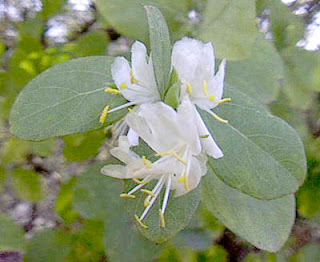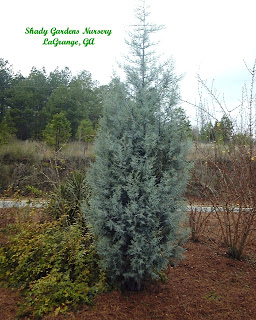
Lonicera fragrantissima is an American Native Honeysuckle Shrub that blooms in winter, hence the common name, Winter Honeysuckle.
The blooms are small but very fragrant, and they simply cover the shrub in January and February, making walks in the garden eagerly anticipated on those warm winter days we often have here in Georgia. My shrubs are already covered with flowerbuds although we had very little rain here this year. Drought-tolerant and easy to grow, this native shrub should be in any garden if you have the space for it.
Winter Honeysuckle will develop into a large shrub and is hardy in USDA Zones 5-9. Red berries form in summer, but they're so well-hidden behind the leaves that they usually go unnoticed by all but the birds who seem to know where to look.
The blooms are small but very fragrant, and they simply cover the shrub in January and February, making walks in the garden eagerly anticipated on those warm winter days we often have here in Georgia. My shrubs are already covered with flowerbuds although we had very little rain here this year. Drought-tolerant and easy to grow, this native shrub should be in any garden if you have the space for it.
Winter Honeysuckle will develop into a large shrub and is hardy in USDA Zones 5-9. Red berries form in summer, but they're so well-hidden behind the leaves that they usually go unnoticed by all but the birds who seem to know where to look.
